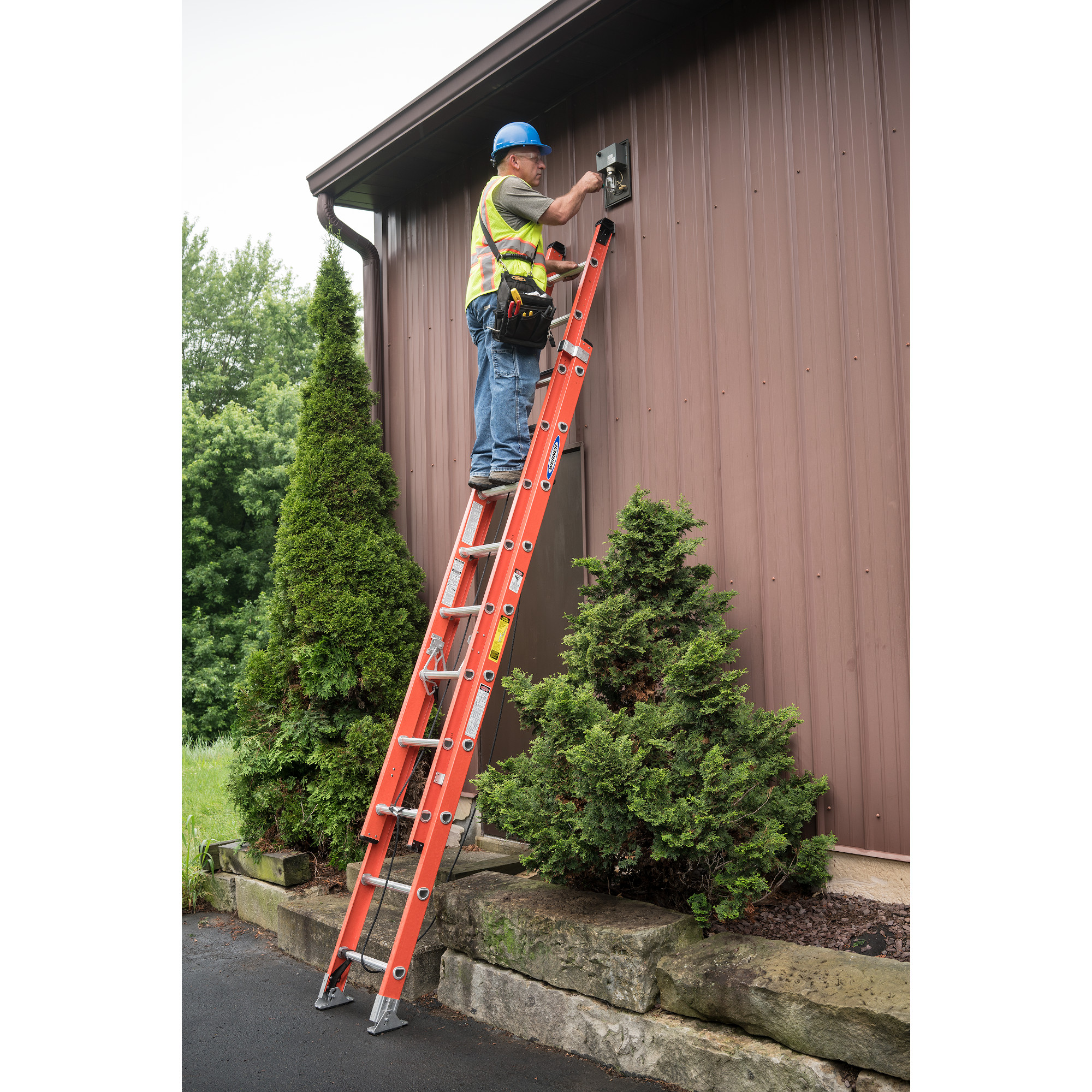August 28, 2023
Reduce Falls: Safe Use of Extension Ladder
Workers who use extension ladders risk permanent injury or death from falls and electrocutions. These hazards can be eliminated or substantially reduced by following good safety practices.
What is an extension ladder? Also known as “portable ladders,” extension ladders usually have two sections that operate in brackets or guides allowing for adjustable lengths. Because extension ladders are not self-supporting they require a stable structure that can withstand the intended load.

Plan ahead to get the job done safely.
- Use a ladder that can sustain at least four times the maximum intended load, except that each extra-heavy-duty type 1A metal or plastic ladder shall sustain at least 3.3 times the maximum intended load.
- Visually inspect all extension ladders before use for any defects such as missing rungs, bolts, cleats, screws and loose components.
- Allow sufficient room to step off the ladder safely. Keep the area around the bottom and the top of the ladder clear of equipment, materials and tools.
- Set the ladder at the proper angle. When a ladder is leaned against a wall, the bottom of the ladder should be one-quarter of the ladder’s working length away from the wall. For access to an elevated work surface, extend the top of the ladder three feet above that surface or secure the ladder at its top.
- Before starting work, survey the area for potential hazards, such as energized overhead power lines. Ladders shall have nonconductive side rails if they are used where the worker or the ladder could contact exposed energized electrical equipment.
- Set the base of the ladder so that the bottom sits securely and so both side rails are evenly supported. The ladder rails should be square to the structure against which it is leaning with both footpads placed securely on a stable and level surface.
- Secure the ladder’s dogs or pawls before climbing.
- When using a ladder in a high-activity area, secure it to prevent movement and use a barrier to redirect workers and equipment.
Select a ladder based on the expected load capacity (duty rating), the type of work to be done and the correct height. There are five categories of ladder duty ratings.
| Type | Duty Rating | Use | Loads |
|---|---|---|---|
| IAA* | Special Duty | Rugged | 375 lbs. |
| IA | Extra Duty | Industrial | 300 lbs. |
| I | Heavy Duty | Industrial | 250 lbs. |
| II | Medium Duty | Commerical | 225 lbs. |
| III | Light Duty | Residential | 200 lbs. |
Click here to watch a video that recreates the real-life series of events that led to the death of a 33-year-old construction worker from a ladder fall and how it could have been prevented.